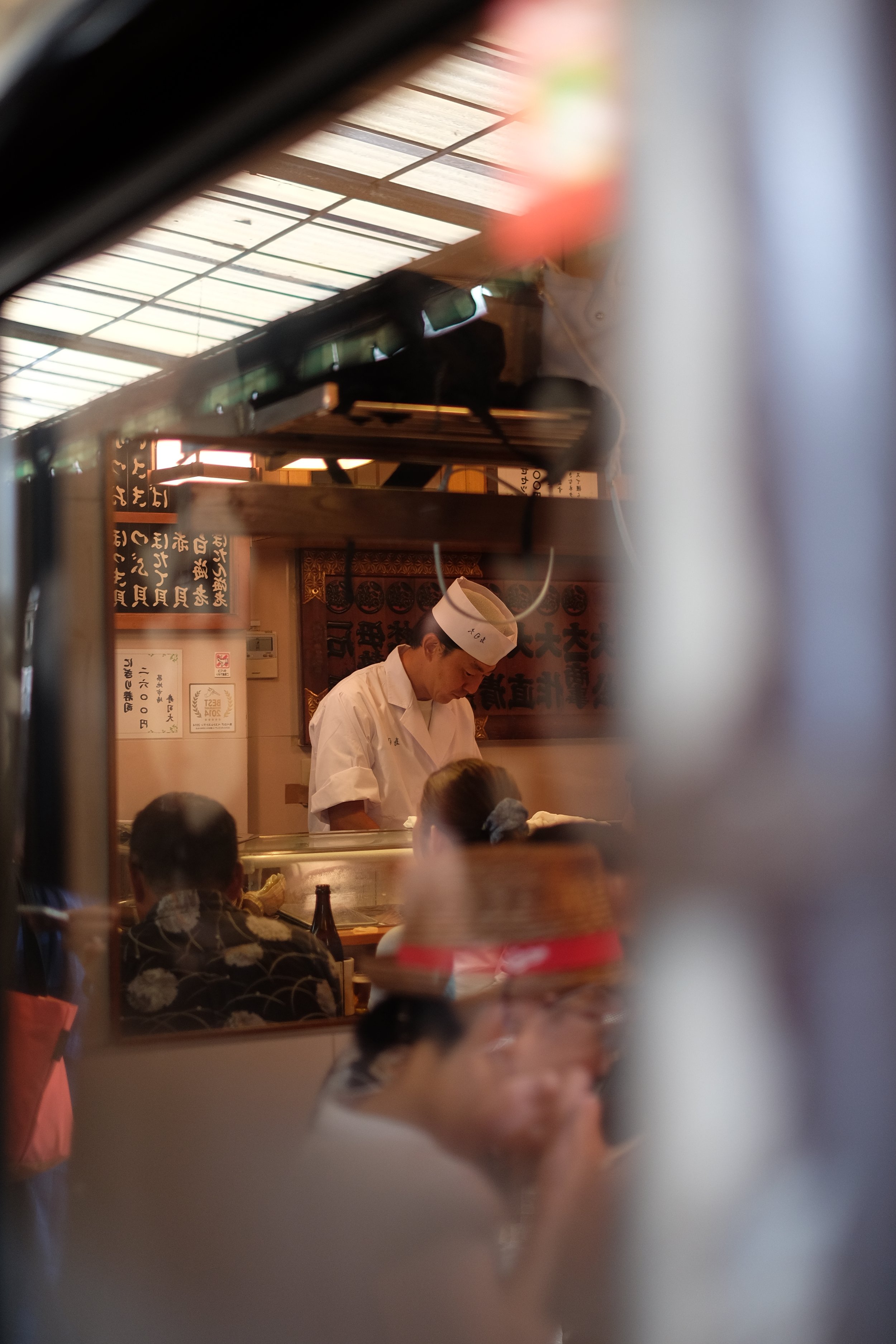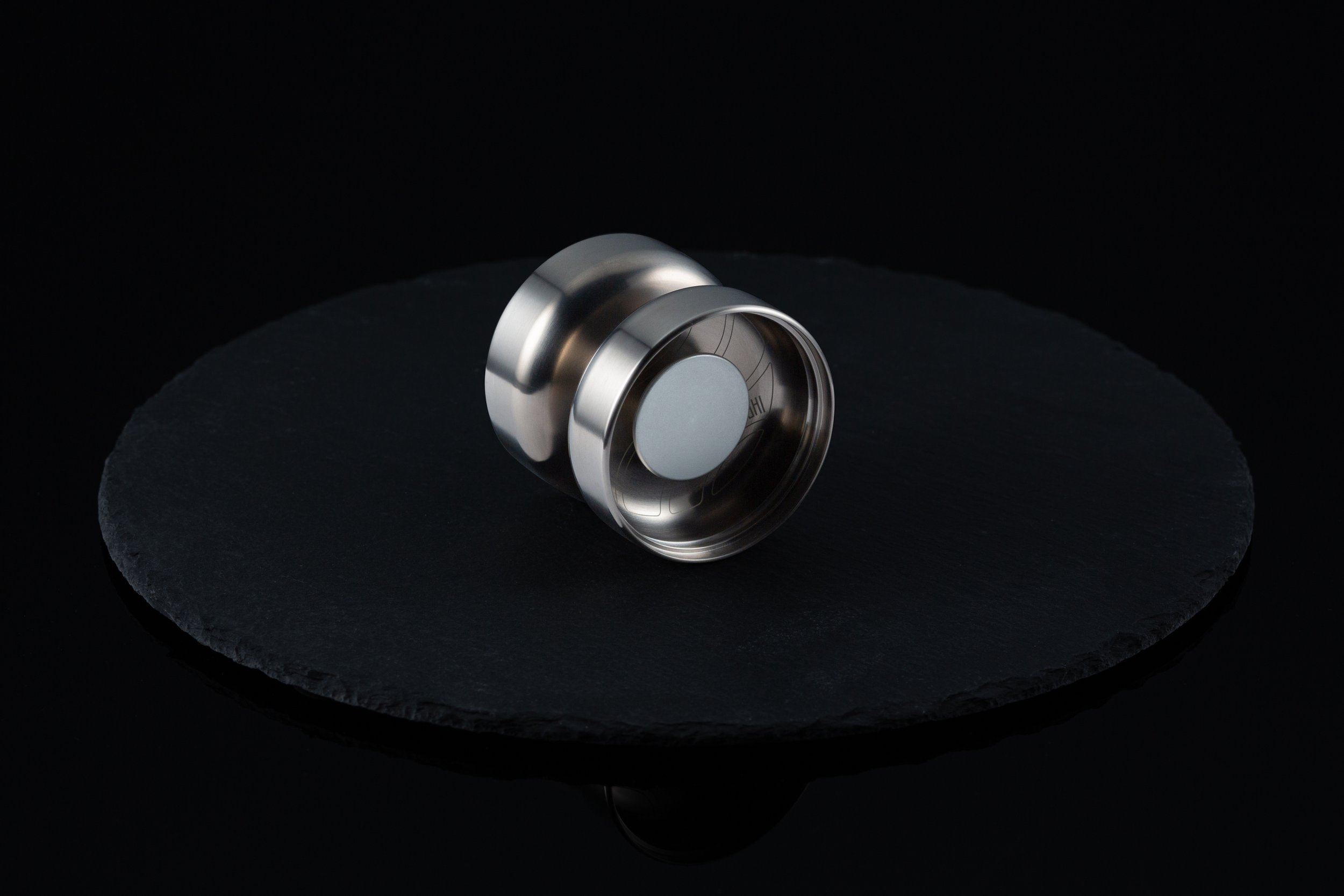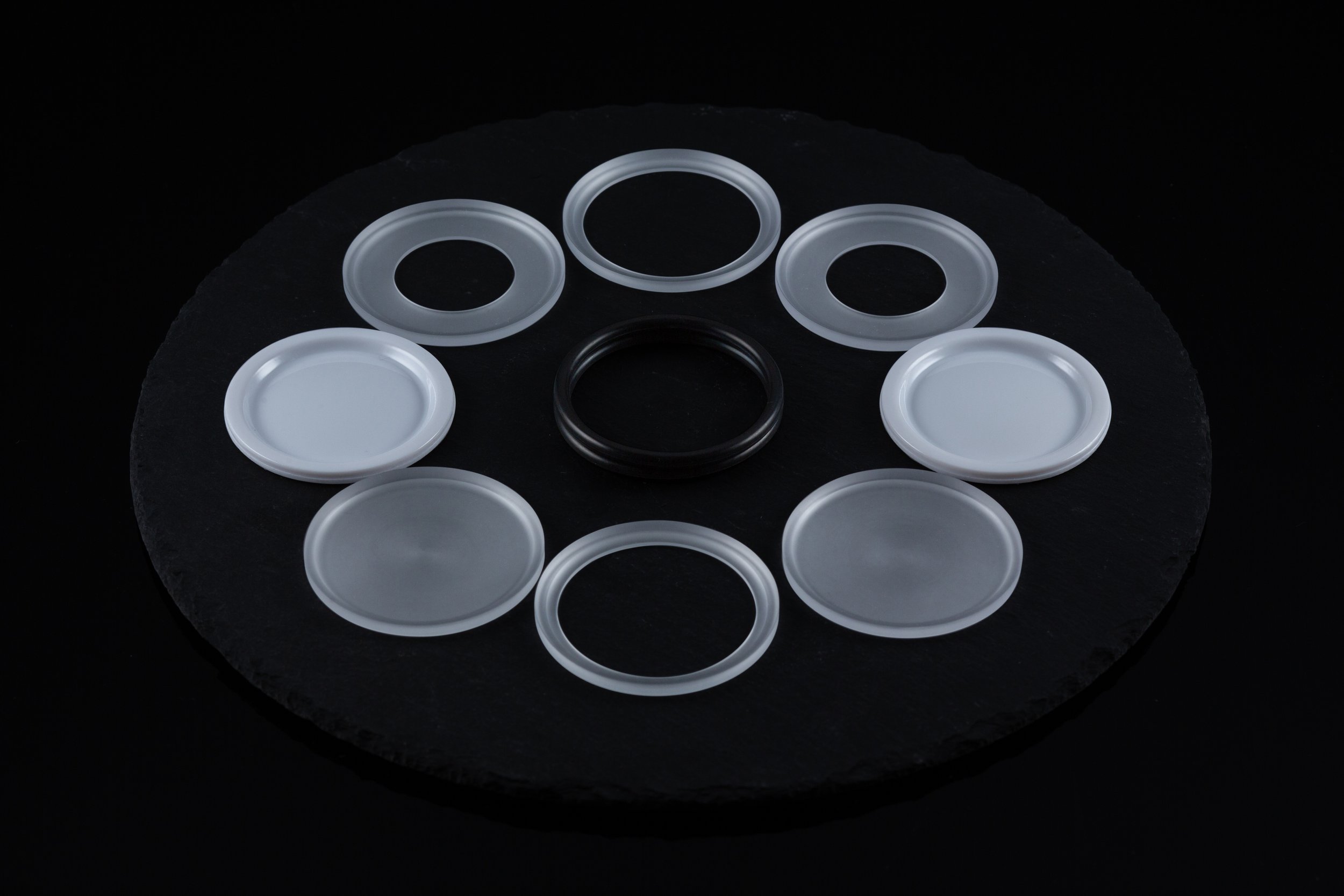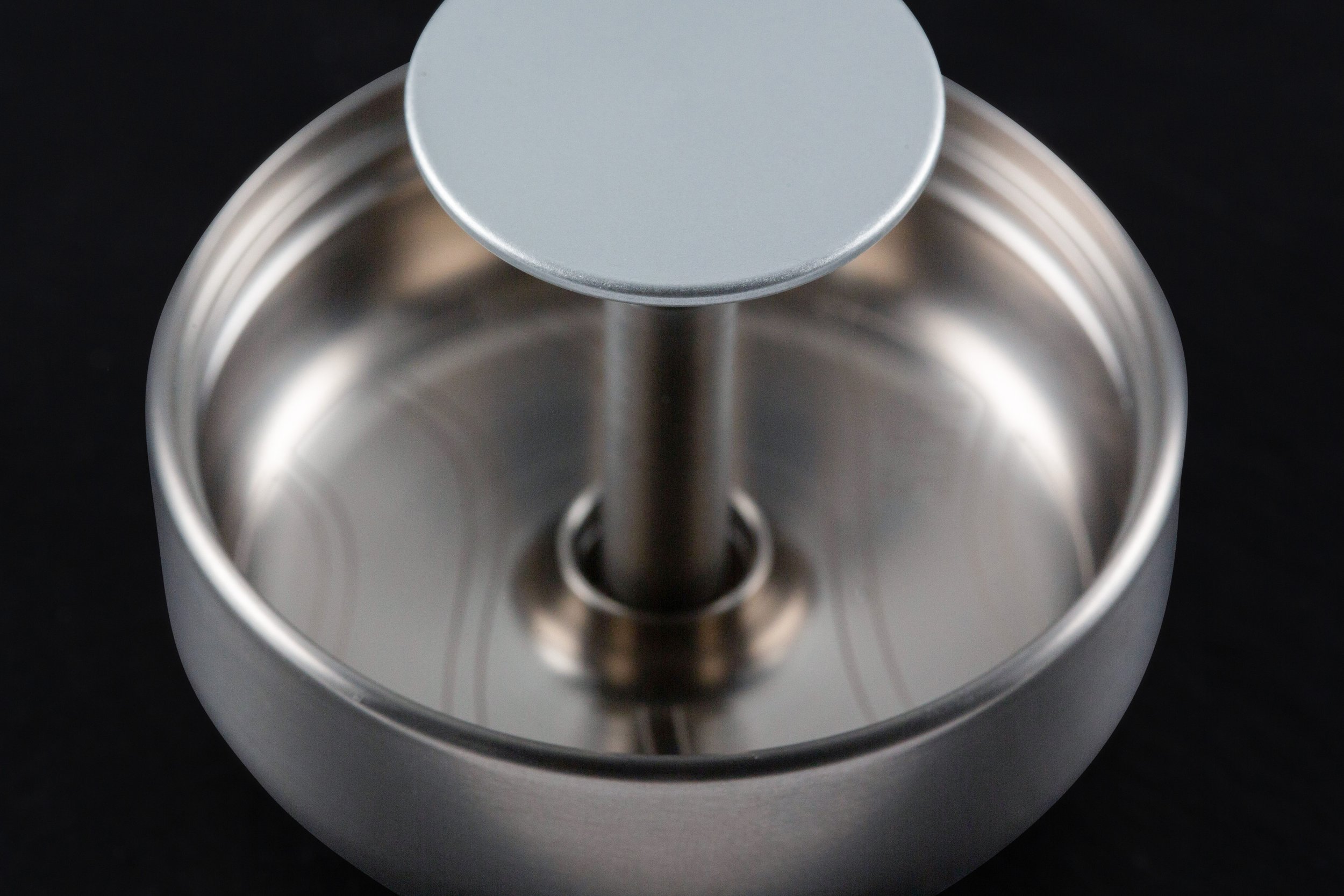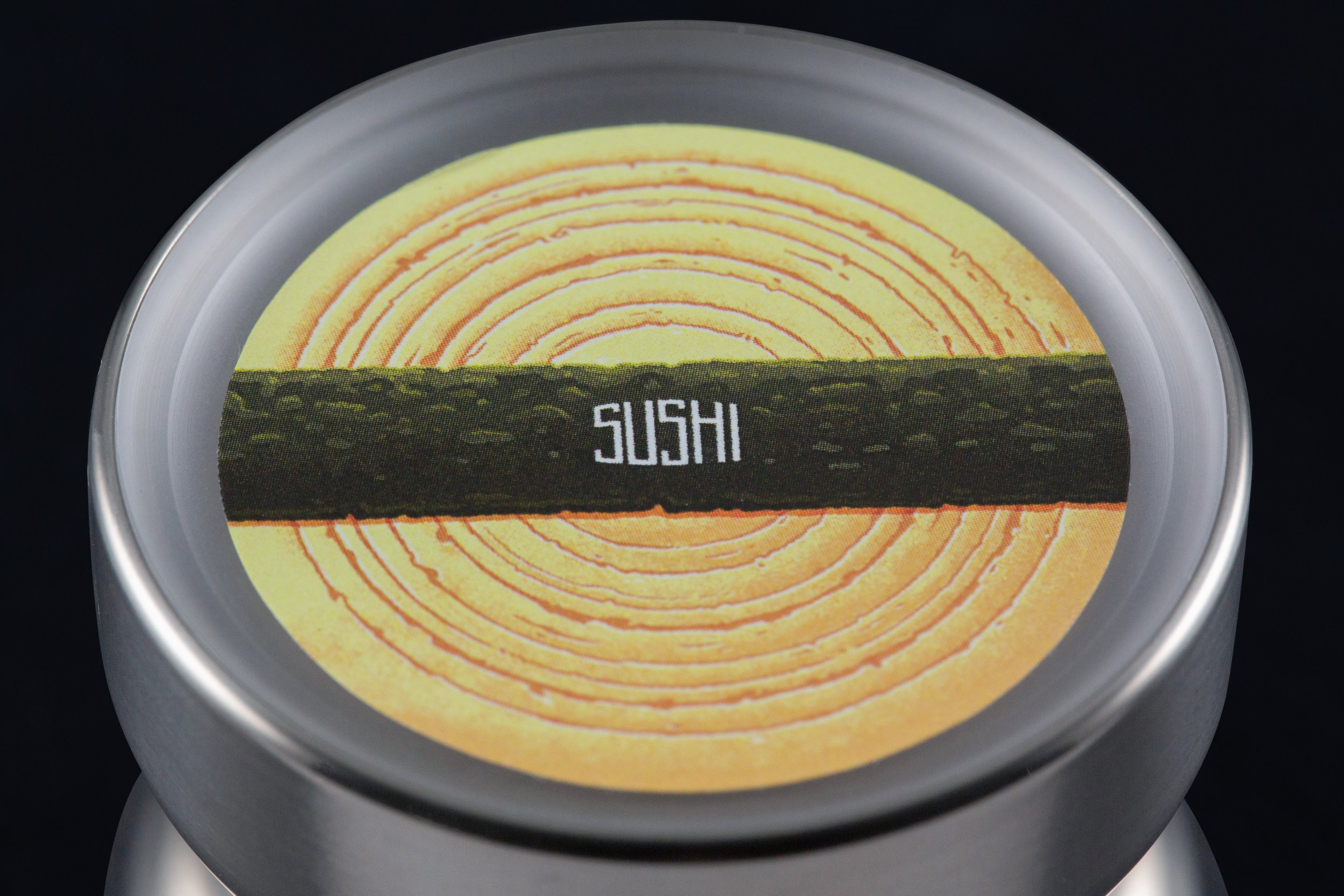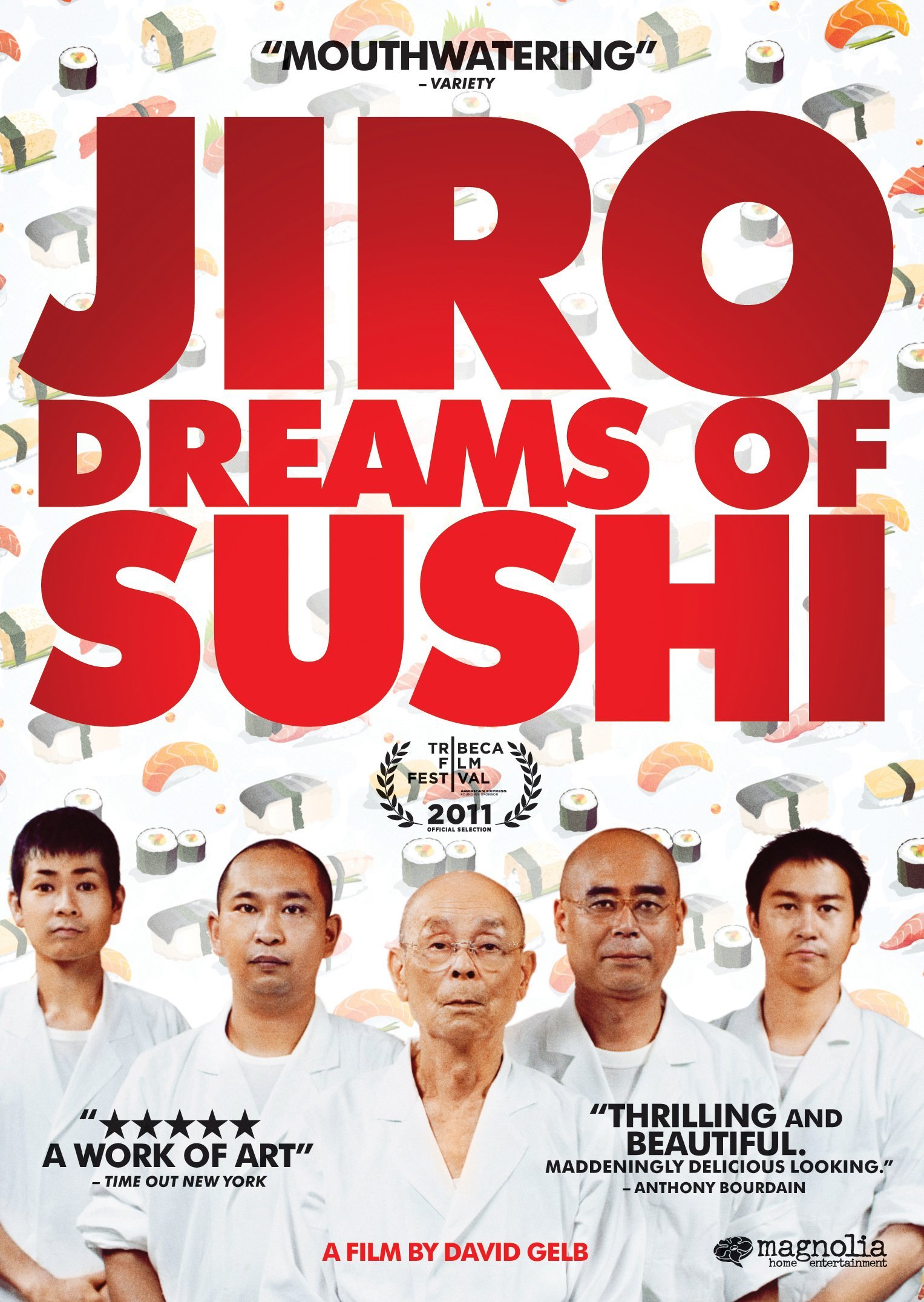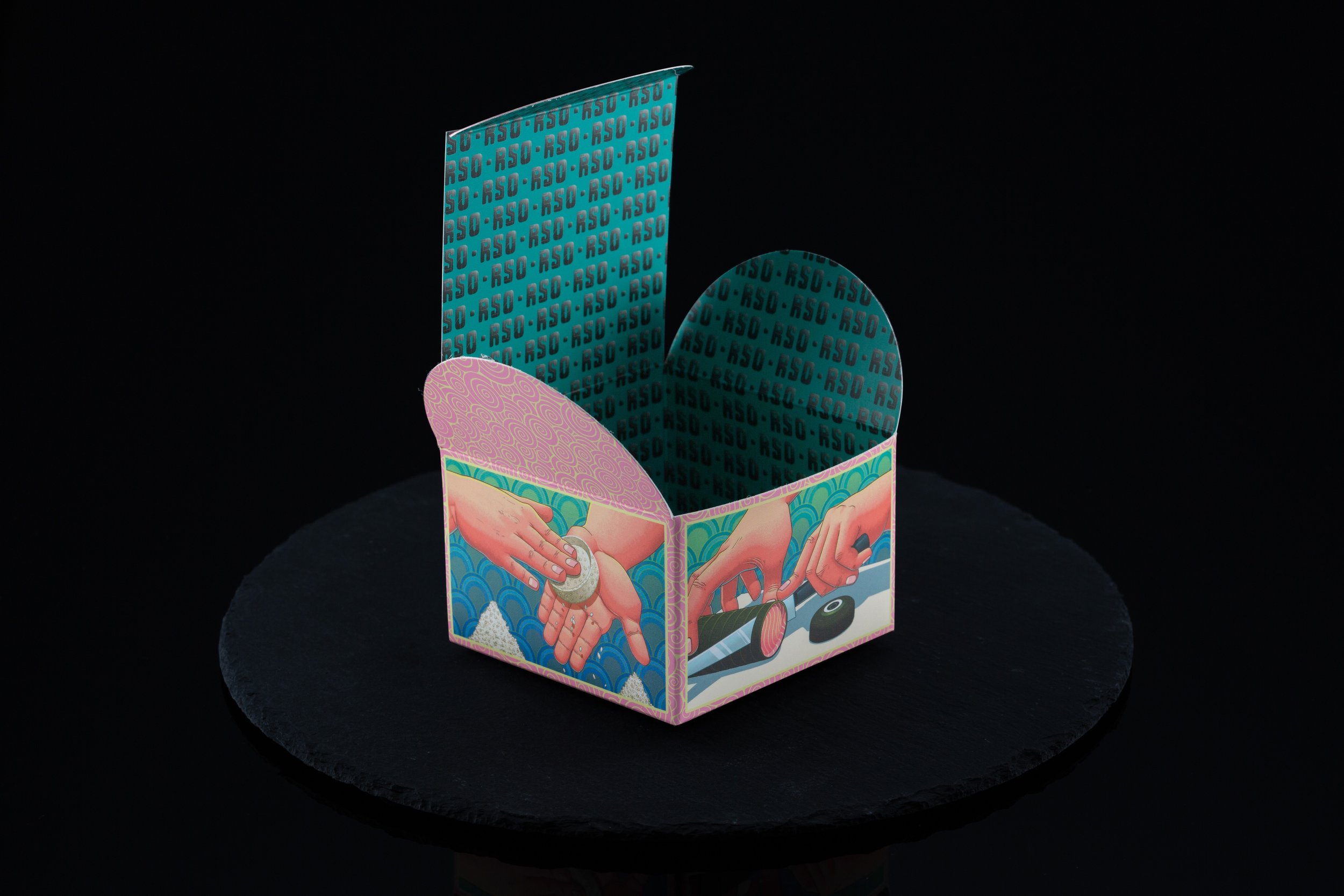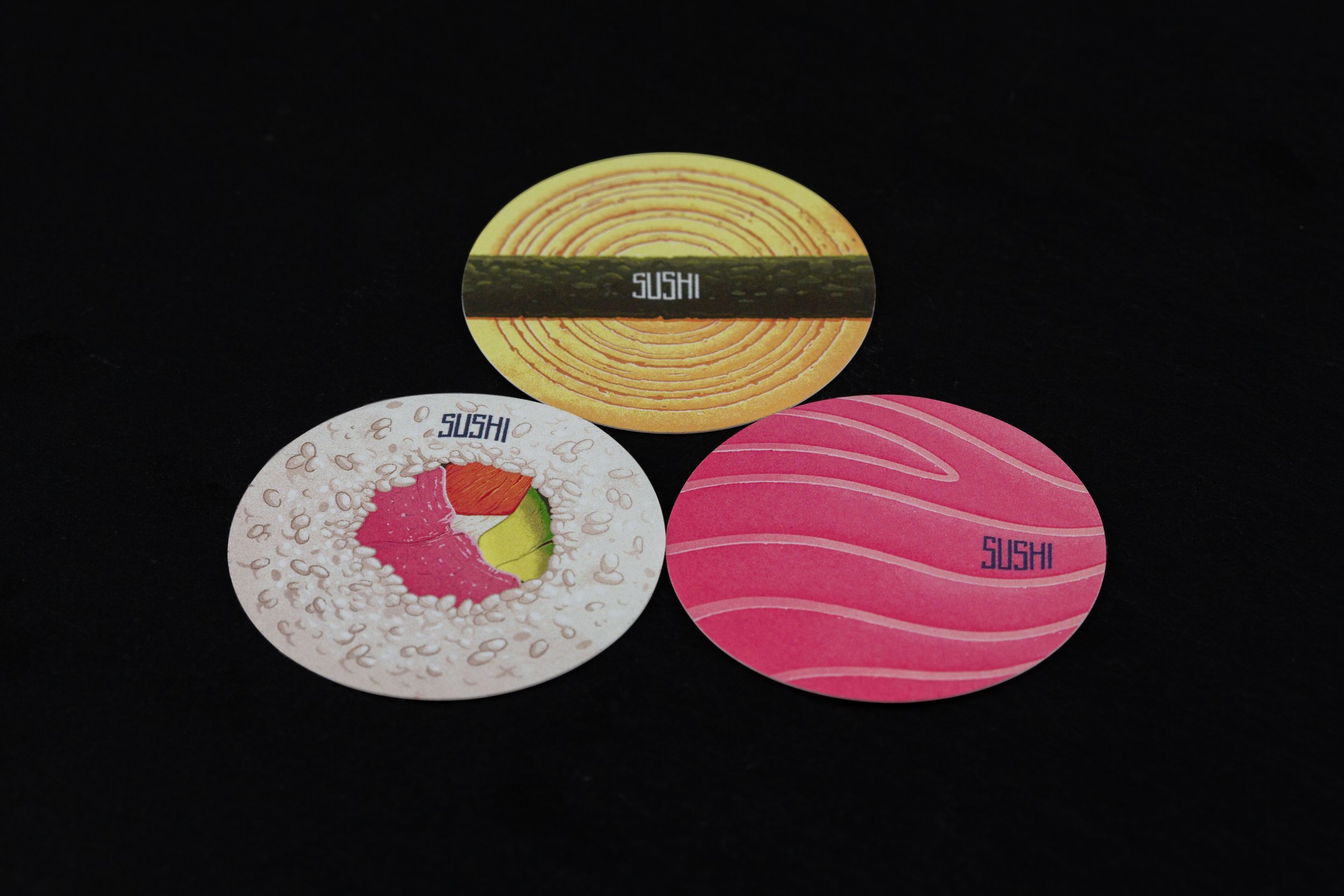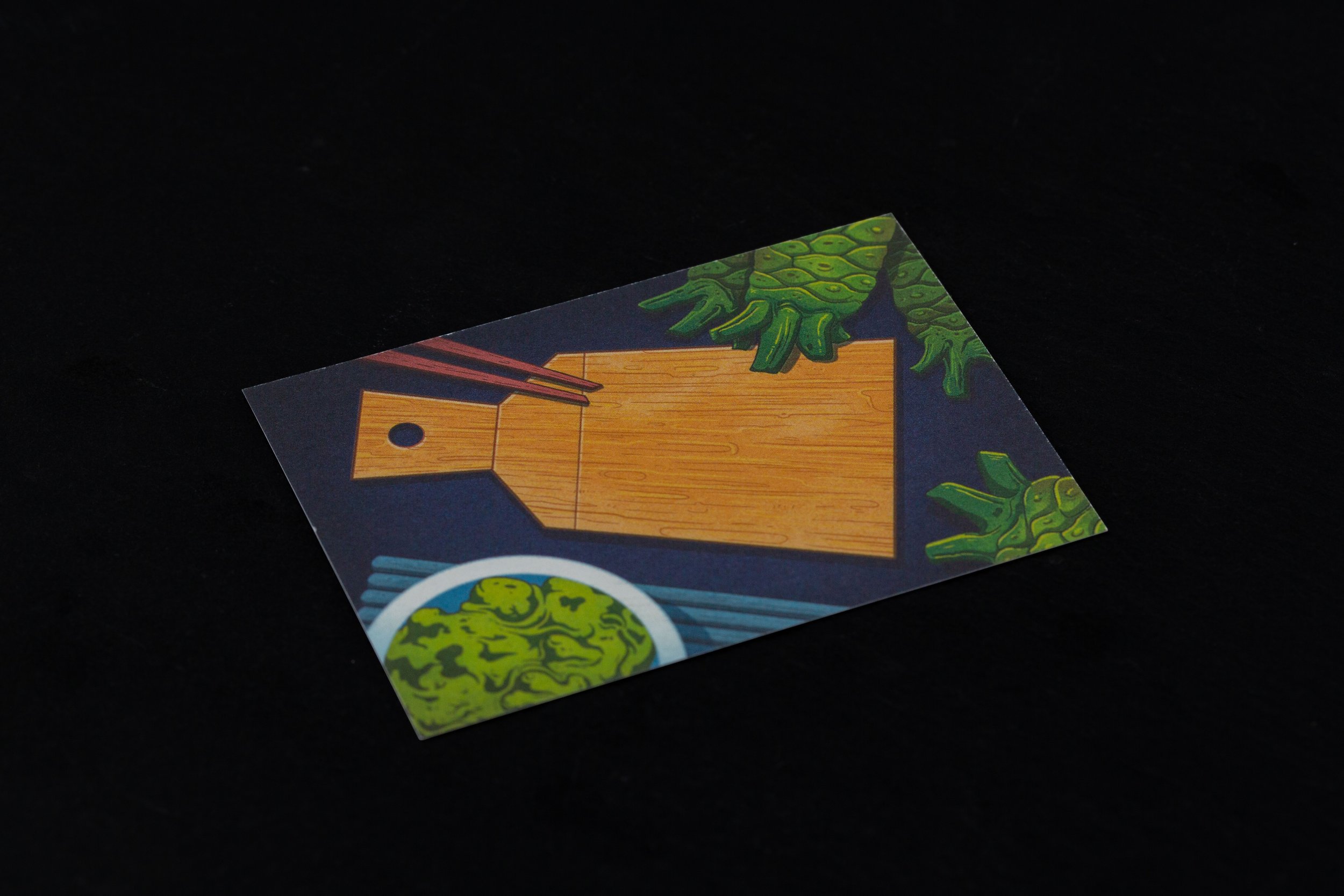RELEASE INFORMATION
RELEASE DATE 17 APRIL 2022
Sold direct AND VIA YOYOEXPERT, SPINGEAR AND YOYOREWIND
Retail 379.99 USD
RAW TITANIUM
62 MADE
VARIABLE WEIGHT, FROM 59.0G TO 75.2G, DEPENDING ON THE COMPONENTS INSTALLED
SHIPPING WEIGHT OF 63.7g WITH ONE DROP ALUMINUM DISC SIDE EFFECTS
Diameter 50.5mm, Width 45mm, Gap 4.4mm
YOYORECREATION NSK PLATINUM DOUBLE STRAIGHT C bearing
CLYW SLIM / G GRIP SIZED LANDING PADS RESPONSE
SUSHIHOLIC
I am not a sushi connoisseur but definitely a sushiholic. Like most of you, I would be more than satisfied with a simple pre-packaged sushi roll from the supermarket! My love for sushi stems from my fondness for Japan. In 2015, I proposed to my then-girlfriend on top of the Tokyo Skytree and attended the World Yo-Yo Contest. Fast forward to 2019, with a 6-month old toddler in tow, our little family toured the beautiful cities of Kyoto and Osaka. I am definitely going back to Japan when travel restrictions ease.
A sushi chef inside Sushi Dai.
A long queue outside Sushi Dai.
Inside the Tsukiji market, which has since relocated.
Japanese sushi chefs' love and respect for sushi preparation are awe-inspiring. Often lauded for their culinary excellence, they are immensely passionate about their craft and spend years honing their skills. You would easily find a delicious sushi meal in any random restaurant in Japan.
I have adopted a similar mindset for all RSO releases so far. RSO yo-yos are prototyped extensively, and the journey is comprehensively documented. Considerable time is also spent on the story, artwork, engraving, accessories and packaging for each release. These add production costs to each yo-yo, but RSO has been able to keep its prices similar to (if not lower than) many companies who mainly sell bare-bones titanium yo-yos today.
For an RSO yo-yo named Sushi, the intricate details had to be absolutely perfect.
My then-fiance (now wife) in Sushi Zanmai.
LET’S ROLL
Production Sushi yo-yo.
Since the release of Gravity, I have been brainstorming for unique shapes that differ from the primarily organic RSO lineup. One of the most coveted RSO yo-yos is the titanium Bowl: Japan Edition, which had a ramen theme. Naturally, making a second yo-yo inspired by another Japanese food staple was always on the cards.
This may sound ridiculous, but I went to great lengths to ensure that the yo-yo halves would look like they were cut from a sushi roll. The pieces form a cylinder when lined up together.
Forming a Sushi roll with Sushi halves.
Why did I choose disc Side Effects (SE) for Sushi?
Disc SE are the only ones suitable for Sushi, as any other SE would reveal the hub and make the yo-yo look… “un-sushi-like”. A piece of sushi does not have a nipple in the center. Note that while disc SE fit the overall Sushi look, the same cannot be said for most other yo-yos (particularly V-shaped ones like Droid).
Moreover, it has been a long time since One Drop released a yo-yo that ships with disc SE. A yo-yo equipped with disc SE would have a novelty factor and would have some appeal.
The disc SE are one of the heaviest SE available at 7.2g and only come in aluminium. One Drop does not make them in brass for obvious reasons. Even with disc SE installed, the shipping weight of Sushi is a very delectable 63.7g, due to the relatively low base weight of the yo-yo halves. With aluminium ultralight SE (2.5g) installed, Sushi weighs a mere 59.0g.
Having a palatable weight is a fundamental requirement for any yo-yo. Caps play an essential role in weight variation and changing the playfeel of the yo-yo, in addition to their ancillary function of improving the yo-yo’s aesthetics. I did not want Sushi to weigh a hernia inducing 70g with the caps installed. With aluminium ultralight SE and the heaviest caps available installed, Sushi only weighs 64.6g.
Sushi is not a rim-weighted yo-yo, less so than Gravity. I designed Gravity to closely match the Freehand 1’s weight (65.8g) with aluminium ultralight SE, and the Freehand Zero caps (2.7g each) installed. Sushi had to weigh less to avoid a “heavy” playfeel. Each half of Sushi is almost 1g lighter than a Gravity half.
The magical thing about disc SE is that because they are so heavy and have a much broader profile, swapping them out for another SE changes the yo-yo’s playfeel significantly more than other SE types.
With the included disc SE, Sushi plays unhurried, controlled and steady, just like an omakase meal you would have at a top tier Michelin starred sushi restaurant. I would describe the playfeel as “floaty”.
However, suppose you want a quick sushi fix; simply swap out the disc SE for aluminium ultralight SE (not included). Sushi weighs a mere 59.0g in this configuration and plays zippy and light, and is bound to instantly satisfy your sushi cravings.
Don’t be fooled by Sushi’s squarish shape - it is pretty comfortable to hold. Despite its reasonably high walls, it has a generous gap and handles multiple string layers effortlessly. It is also one of the more stable RSO throws so far. Without having to consciously try to ensure that the yo-yo does not tilt, you can be fully focused on the gastronomic experience.
DANCE TO A DIFFERENT TUNA
The Sushi shape might look simple, but it is one of the yo-yos I spent the most time prototyping after Doombot and Droid. My insistence on retaining the cylindrical shape was the root of all the problems.
52mm 6061 aluminium Sushi prototype with a hollow construct.
Sushi started out as a 52 mm diameter aluminum yo-yo with a hollow construct. My initial plan was anodize the caps in different colors to match typical sushi ingredients (for example, yellow for tamago, pink for sashimi and orange for uni). I could do a fairly large run and price them low so that more people would be able to own an RSO.
The caps were CNC machined out of 6061 aluminium, and measured 1 mm at their thinnest portions. They were also made marginally bigger than the cap grooves, allowing them to be pressed fit into the yo-yo firmly.
The aluminium prototype failed miserably. The yo-yo was smooth if assembled without the caps, but installing the caps would introduce intolerable pulse vibe. It was the most vibey prototype since I started making yo-yos. The problem was that the caps were too thin and had warped during the machining or press-fit process. This prototype plays extremely floaty.
Spaceship (left), a 54 mm diameter yo-yo, next to the aluminium Sushi prototype (right), a 52 mm diameter yo-yo. Photo by Shimon Osada (@shimoff_2).
The solution seemed simple initially - just make the caps thicker! However, I could not remove enough weight from the yo-yo body to redistribute to the caps after countless attempts. In addition, the inherent cylindrical shape of the yo-yo necessitated a significant amount of material at the yo-yo’s rims since the rims extend outwards to span almost the entire width of the yo-yo. Conversely, a V-shaped yo-yo with similar dimensions would take up less weight (if you find it hard to visualize this, just compare the volumes of a cylinder and a cone).
Sushi was only possible with a titanium SE design, which allowed for retention of a similar aesthetic with caps installed. As much as I love how yo-yos play in titanium more than aluminium, there was a lot of inertia to take this route because the small size of the market for such a peculiar shape. Would anyone buy a titanium yo-yo with a squarish shape? I decided to bite the bullet anyway, ultimately making a small run of 62 yo-yos.
52mm titanium Sushi prototype. Note the different engraving from the production version.
The titanium prototype had one thing I did not like - its size. It felt large in the hand at 52 mm, and… wait for it… it was not small enough to look like a convincing piece of sushi (you must be tired of my obsession with making the yo-yo look exactly like a piece of sushi by now). The 52 mm diameter also made the disc SE look relatively small and not “fill” the hub.
Ideally, I would have liked the yo-yo diameter to be 50 mm. However, I wanted to make the accessories backwards compatible with Gravity and was constrained by the 48 mm diameter of the Freehand Zero caps. Sufficient material is needed at the cap groove for the yo-yo to be machinable. I eventually settled for a 50.5 mm diameter for the production version of Sushi, with the thickness of the cap groove measuring a safe 1.25 mm.
Before I put Sushi into production, a final prototype with a 50.5 mm diameter was made.
From left to right: 52 mm titanium prototype, 50.5 mm production version, 52 mm aluminium prototype.
TASTES BETTER, TOGETHER
I spared no effort in creating the complete package for Sushi.
Like Gravity, Sushi comes with a set of rings and caps, allowing for weight variation. Due to the collaborative nature of the Gravity project and associated cost constraints, a full set of custom CNC machined polycarbonate rings was only included with the Lunar Edition Gravity. This time, the full set is included with every Sushi, at a lower price compared to Gravity.
The components included with Sushi are as follows:
Yo-yo body, 53.7g
RSO CLYW Slim / G-grip Sized Landing Pads and Yoyorecreation NSK platinum double straight C Bearing, 2.3g
Aluminium disc One Drop SE, 7.2g
Pair of rubber cylindrical weight rings, 3.6g
Pair of custom polycarbonate thin rings, 2.8 g
Pair of custom polycarbonate thick rings, 4.4g
Pair of custom polycarbonate caps, 5.6g
Pair of FHZ caps, 5.4g
From left to right, custom CNC machined thin weight ring (1.4g), thick ring (2.2g) and cap (2.8g)
The polycarbonate rings and caps were custom CNC machined to achieve a perfect fit. They have a slightly different design compared to the ones included with Gravity. The hole in the center of the thick rings measures about an inch, which is a hair wider than the disc SE and allows the SE to pass through.
The weight rings, weighing 1.8g each, sit just underneath the caps. Sushi uses the same rubber weight rings as Gravity and the titanium Silver Bullet.
Thin polycarbonate weight ring, weighing 1.4g each.
Thick polycarbonate weight ring, weighing 2.2g each.
Polycarbonate cap, weighing 2.8g each.
Three pairs of meticulously designed stickers were produced. They fit perfectly on the included polycarbonate caps to make your yo-yo look exactly like a piece of sushi.
Blank Freehand Zero caps, weighing 2.7g each.
FEAST YOUR EYES
The artwork is by RSO’s resident artist, ATILA.
The cover star is a sumo wrestler inspired by one of my favorite Street Fighter characters of all time, E-Honda.
For the side flaps, I referenced a few scenes which depict the sushi-making process from the movie Jiro Dreams of Sushi. Despite being in his late nineties, its chef Jiro Ono is still involved in the restaurant’s daily operations.
Special thanks to RSO’s long time friends, Yuuki Yoneno (@ynnyuux) and Shimon Osada (@shimoff_2), who helped with the Japanese banners in the background.
Sushi includes a redesigned cap removal tool. The new tool is longer, which allows the caps to be removed easily.
The enamel pin features a hangiri, a traditional tub used to mix sushi rice.
The certificate of authenticity features an oroshigane, used for grating wasabi.


